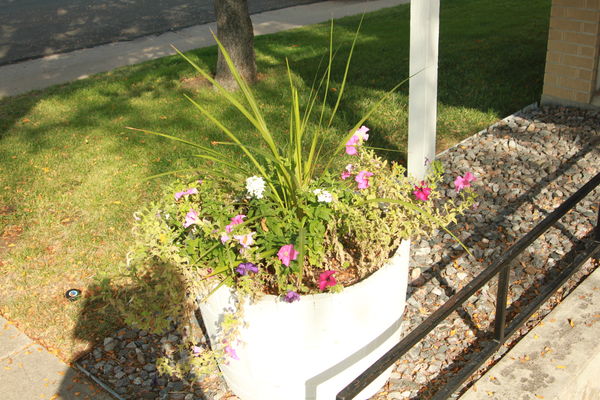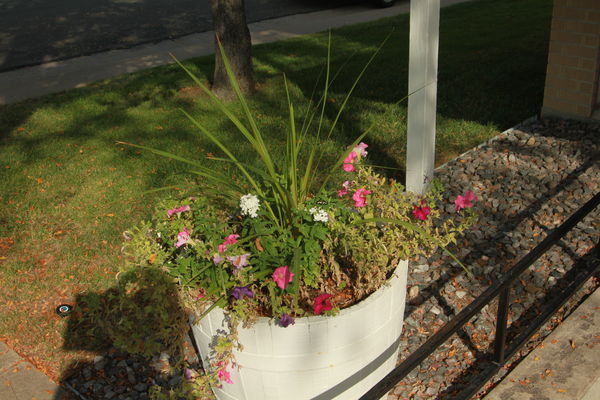Check out Traditional Street and Architectural Photography section of our forum.
18% grey card
Sep 26, 2012 21:07:37 #
Chinaman wrote:
Your camera meter is set to meter an 'average' sce... (show quote)
I YouTubed it and found a video showing what you're explaining. I thought it was pretty cool idea, but didn't have a grey card.
I fired up my favorite word processor and formatted the page to have a gray background. I couldn't do 18%, so I settled for the 20% gray and printed a page. B&W LaserJets do gray real well.
I had the Canon T1i dial on P and took a couple shots. I made use of AE Lock rather than putting it in M. I was pleasantly surprised with the results.
Again I learn something here. Maybe someday I'll learn to keep my shadow out of the pic.
How P wanted it with out Gray Card

Gray Card and AE Lock

Sep 26, 2012 21:30:58 #
RocketScientist wrote:
quote=Chinaman Your camera meter is set to meter ... (show quote)
Wow, rocketScientist, you lived up to your name there. A great demonstration of the use of the grey card. We spell it g-r-E-y in the old English colonies that didn't rebel.
Sep 27, 2012 09:10:22 #
Check out Professional and Advanced Portraiture section of our forum.
Sep 27, 2012 09:17:46 #
you guys are getting it wrong-18% gray has nothing to do with white balance- one is AMOUNT of like, the other is it's COLOR spectrum. Use the 18% to determine your exposure-i.e.-place the card on a pile of coal, and meter for your f-stop....then determine if the pile of coal is lit with sunlight or tungsten, or flourescent---2 different factors to determine that the Film guys had to learn when crossing over to the digital realm
Sep 27, 2012 21:58:28 #
photonynikon wrote:
you guys are getting it wrong-18% gray has nothing to do with white balance- one is AMOUNT of like, the other is it's COLOR spectrum. Use the 18% to determine your exposure-i.e.-place the card on a pile of coal, and meter for your f-stop....then determine if the pile of coal is lit with sunlight or tungsten, or flourescent---2 different factors to determine that the Film guys had to learn when crossing over to the digital realm
In my example, I used my DIY grey card for exposure setting. You may have noticed a custom WB if you looked at the EXIF info on those shots. For that I had the white side of the paper showing, took a shot of all white paper and went into the set custom WB part of the menus. There I chose that picture as my white source. This was before I took the shots.
A Canon DSLR typically wants to take a picture of white, go to the WB menu and select that as the white source, then you need to select the Custom WB on the quick select. My canon P&S cameras use a different procedure, Nikon is probably different as well.
Sep 27, 2012 22:14:14 #
Chinaman wrote:
... We spell it g-r-E-y in the old English colonies that didn't rebel.
... We spell it g-r-E-y in the old English colonies that didn't rebel.
I think I spelled it right this time. :roll: <Bazinga!>
If you want to reply, then register here. Registration is free and your account is created instantly, so you can post right away.
Check out Commercial and Industrial Photography section of our forum.


